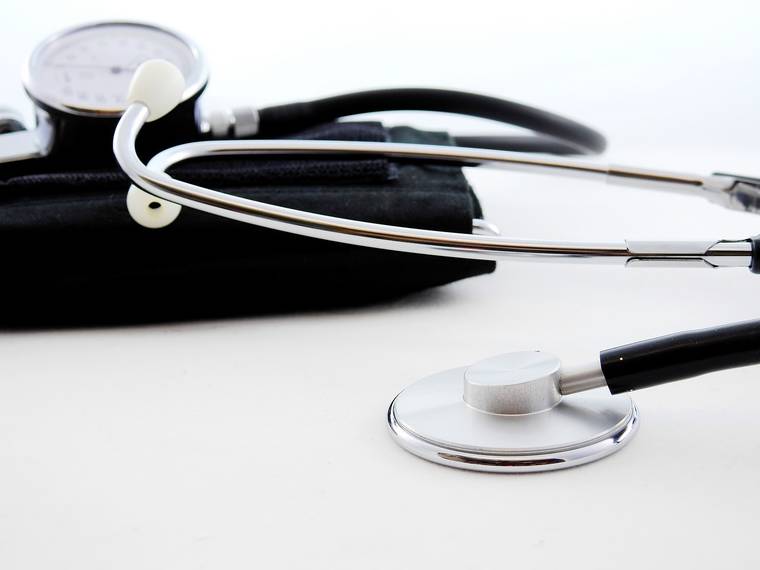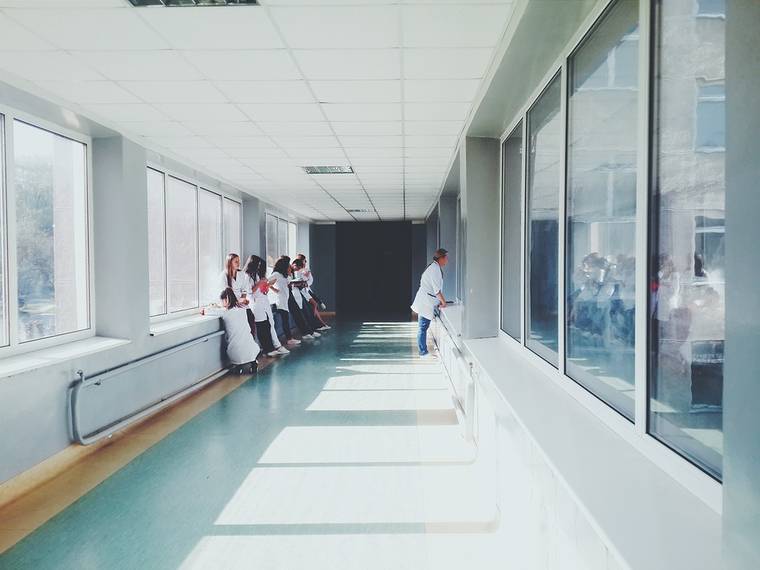Doctor levels critically short


KAILUA-KONA The physician shortage is approaching a critical state on the Big Island.
KAILUA-KONA — The physician shortage is approaching a critical state on the Big Island.
The state’s southernmost island is short 230 doctors — or 44% — of the 528 physicians demanded by the population as of November, a University of Hawaii Physician Workforce Assessment Project report submitted earlier this month to the 2020 Legislature shows.
That’s significantly higher than the statewide shortage reported at 24% with 2,974 of the 3,483 physicians demanded, according to the report. Hawaii County also has the greatest shortage of all counties in the state with Maui County reporting a 36% shortage, Kauai 32%, and Oahu at 16%.
The report, written by Dr. Kelley Withy and filed with the Legislature on Jan. 9, concludes the biggest shortage statewide is for primary care physicians with 276 full-time equivalent positions open. Primary care physicians are typically your go-to doctor and the initial point of contact for patients seeking nonemergency care.
While Hawaii Island has a shortage of 47 primary care physicians, the report shows 12 specialty positions with a shortage rate of 80% or greater.
Six specialty areas on the island have nearly 100% shortages: colorectal surgery (100%), infectious disease (100%), neonatal-perinatal (100%), pulmonology (99%), neurological surgery (97%) and thoracic surgery (97%). Among selected areas with shortages are OB-GYN (39%), cardiology (54%), hematology and oncology (78%), neurology (84%), and urology (79%).
Although there are many factors contributing to the physician shortage, one of the leading reasons is low reimbursement rates compared to the state’s cost of living, according to the Hawaii Medical Association (HMA).
The association, a professional membership organization for physicians, resident physicians, and medical students in Hawaii, recently did an internal study looking at Medicare reimbursement rates in the 87 regions across the country, graphing the payment against the cost of living in each one.
“It clearly shows that Hawaii is underpaid for its cost of living by about 35%, which is significant,” HMA Executive Director Dr. Christopher Flanders said Monday.
To help, he said, Hawaii’s congressional delegation signed a letter to the Centers for Medicare and Medicaid Services asking it to look at the geographic adjustment, which is readjusted every three years. Other states, such as Alaska, have been successful in securing increased reimbursement rates.
“We’ll see what happens with that,” he said. “The problem is compounded by the cost of living here. Students are coming out of medical school with tremendous student loans, and they have to pay them off and do what’s best for them and their family, so staying here becomes difficult.”
Hawaii is also not competitive with the rest of the nation in recruiting and retaining physicians.
“I’ve spoken to recruiters on the mainland who have said they don’t even really try to place anybody in Hawaii because they have too many instances where they go to the expense to bring somebody over for an interview and they start to do the math and say they can’t do it on this,” he said.
Not too mention the Big Island’s geographic size and health infrastructure being not up to date.
“It’s hard to recruit doctors to a place where there’s not enough doctors to start with because of the call responsibilities and the ability to cover all the patients because nobody wants to be on duty 24/7,” he said, later noting the island hasn’t been able to keep up with the new advances and new equipment as Oahu facilities have.
To address the shortage, the Physician Workforce Assessment Project has implemented some initiatives, according to the report.
Among them are hiring a Hawaii physician recruiter to work closely with the Hawaii Physician Recruiter Group to match program graduates and interested physicians with open positions; assisting with finding young doctors to take over practices of retiring physicians; and setting up physician connection groups on all islands.
The group has already rolled out the Hawaii Health Career Academy, a college and career success course for eighth grade through undergraduate students to increase local students competitiveness for medical school.
Effective in 2019, a preceptor tax credit became available to those offering professional instruction, training, and supervision to students and residents in medicine, nursing and pharmacy. Currently, 225 physicians have qualified for the credit and more will be reviewed by the end of the year.
The group is also working to assist in the development of John A. Burns School of Medicine scholarships that require pay back of time practicing in Hawaii.
“We’re not even able to hang onto students who graduate from John A. Burns School of Medicine,” Flanders explained. “They train here then go to the mainland for residency.”
Studies show that residents usually stay within 50 miles of where they did their residency training. However, that’s not always the case in Hawaii where residency and specialist opportunities are limited.
“Part of the problem is we don’t have enough graduate residencies to meet the demand, mostly with the specialties. We need to make Hawaii a more attractive place for them to stay,” Flanders said, also noting that training opportunities need to exist on the outer islands to entice physicians to practice there.
The HMA exec said he would like to see a Veterans Administration (VA) hospital built on the Big Island. Hawaii’s lone VA hospital is Tripler Army Medical Center on Oahu.
“We’re going to need some creative out-of-the-box thinking,” Flanders said.
State Rep. Richard Creagan (D-S. Kona-Ka‘u), who’s represented the district since 2014, is doing just that.
Moving forward with a new hospital in Kona and making it a teaching facility will help in recruiting and retaining physicians, he said.
“It is better medicine, and, hopefully, some of those people will stick around,” said Creagan.
But facilities are very expensive, and the Hawaii Health Systems Corporation has not allocated the funds for a new hospital, although a site has been identified adjacent to Hawaii Community College — Palamanui. While the state would have to provide a significant chunk of the funding, Creagan envisions a private-public partnership to build the type of hospital that would attract the physicians needed on the Big Island and across the state.
“The goal is to get a new hospital in Kona,” he said. “If it’s a shiny new hospital and it’s well-equipped, it will draw more physicians to the island.”
Though it’s something that’s been talked about for decades, Creagan sees the 2020 Legislature, which opens today, forming a task force to study the feasibility of such a plan.
“Are we going to get a group together to talk about it or are we going to make a plan?” he mused. “The critical thing is, we need that hospital and that will really help the physician shortage.”
He concluded, “we do have a largely insured population, but the problem is if you don’t have physicians to go see, it doesn’t do any good.”


